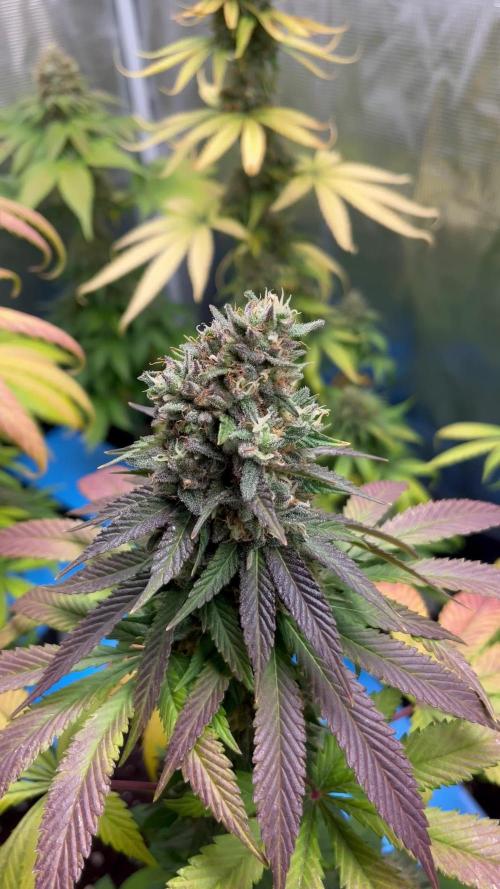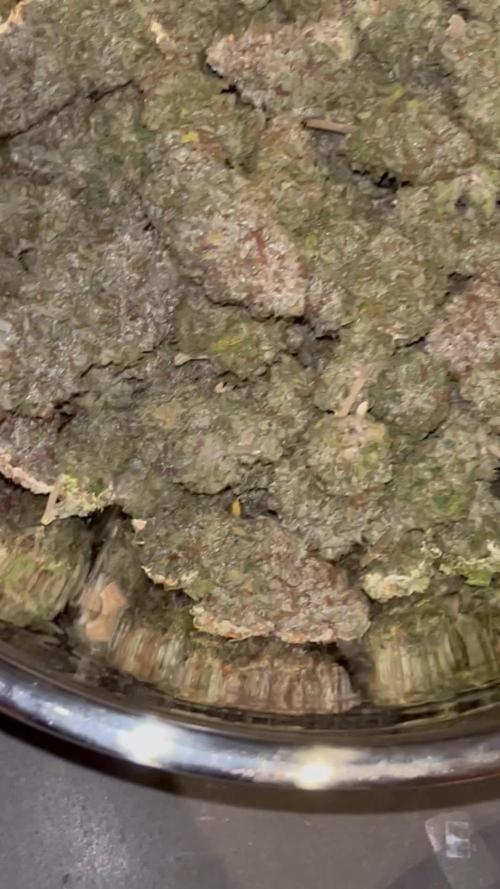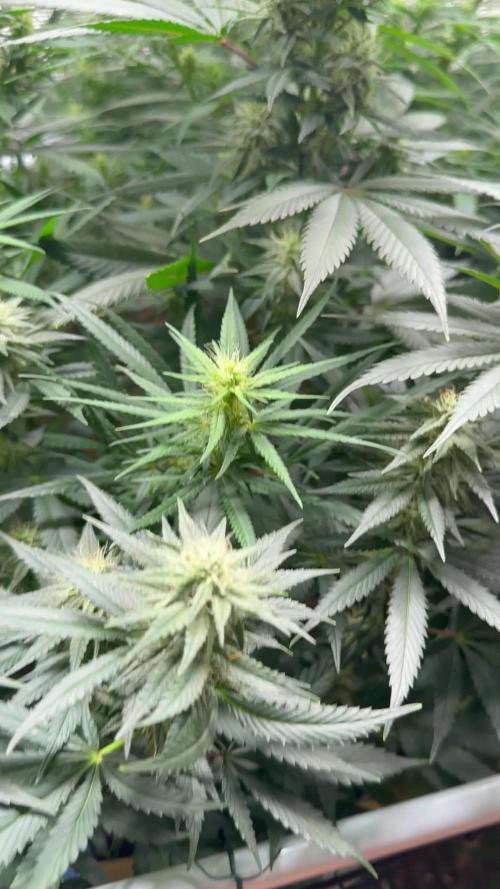The Grow Awards 2026 🏆 





















Processing
Likes
19
Share


@CBD_Sweden
Follow
2018-04-10 Day 1
I gave the girls water and nutrients yesterday so nothing to drink today.
Turned them 90 degrees today, to give my girls as much lightexposure as possible.
The flowers get bigger and bigger for each day,
Overall the ladies look really good, the colors are very nice, they look healthy.
Somehow the photos of nr1 got lost, very strange, but great pics of nr2. Also added videos of them both.
Power Plant XL nr 1 is 67 cm
Power Plant XL nr 2 is 68 cm
------------------------------------------------------------------------------------------------------------------------------------
Strain information
Genetics for the famous Power Plant were captured by a group of Dutch growers on a trip to South Africa, back in the 90’s. They managed to breed a strain that was soon a popular choice in coffee shops of the Netherlands, most likely due to the soaring and intense Sativa high. Zambeza Seeds thought that the productiveness of Power Plant should never be forgotten and created an updated version, to bring the legend back to live.
Power Plant XL yields up to 600-750g/m² in a flowering period of approximately 55 days! The efficiency and productiveness of Power Plant XL fears no comparison with many recently bred cannabis strains. Indoor heights of 80-110cm make this sativa-dominant variety relatively easy to grow, but outdoor growers need to be aware of the power that is being released under the sun. Outdoor plants can easily reach heights of 150-200cm, and yields of 500-600g per plant.
The taste of Power Plant XL can be described as a delightful blend of sweet and sour flavours, with subtle hints of pine tree in the background. Smokers who appreciate a very strong and uplifting Sativa high will be more than satisfied with the effects. One will experience feelings of euphoria that are definitely intense and uplifting, typical for a South African Sativa like this. The up-high can also evolve into being more relaxed, especially when larger quantities are being consumed.
Some people suspect Power Plant to be grown in large commercial operations around the world. It doesn’t really matter if these assumptions are the truth or myths, but Zambeza’s breeders are very proud to bring this highly productive legend back to live. The updated version of it, Power Plant XL, is the most efficient Dutch "bud factory" money can buy.
-------------------------------------------------------------------------------------------
Likes
15
Share


@valiotoro
Follow
Easy trim✂️
As always first the top buds then after 7 days the lower buds✂️
The smell is divine citrus & ripe cherry super sweet🤤🍋🍒
Imagine if you mix a scoop of amarena & lemon sorbet gelato and you have the smell!
Likes
7
Share


@iLoveGoodWeed
Follow
The buds are spread everywhere and they are nice and frosty in next 2 weeks she will get fat.
Likes
12
Share


@CityFarmer
Follow
Hello everyone,
I've had a busy week, so this is what I have for you guys
See y'all next week 🤘🤘
Likes
5
Share


@eldruida_lamota
Follow
Vamos familia, actualizamos la septima semana de floración de estas Lemon Mandarin de Fastbuds.
La temperatura que estuvo entre los 24-26 grados y humedad dentro de los rangos correctos.
En cuanto a las plantas pues estas últimas semanas cogimos un poco de trips y pues ahí ando combatiendo con planchas pegajosas de color azul, estiraron bien y ensancharon bastante también.
Las flores se están llenando de tricomas y van hinchando, aún con la plaga, por el momento todo correcto, aportamos mega pk y thor de Agrobeta.
Hasta aquí todo lo de esta semana , ya quedan pocas semanas iremos viendo como maduran, buenos humos.
- os dejo por aquí un CÓDIGO: Eldruida
Descuento para la tienda de MARS HYDRO.
https://www.mars-hydro.com
Hasta aquí todo, Buenos humos 💨💨💨
Processing
Likes
25
Share


@parachute
Follow
Alright, now all the girls are in flowering stage and they are doing quite well. Would like to mention again very strong genetics of gorilla,cookies and zkittlez. Wow, they are really showing incredible growth and all the plants are healthy and even has any yellow leaves. They are very resistant to warm temperature ( 28-29 ).
I started using the connoiseur bloom AB and bud candy, and planning to add some of Tarantula/Piranha/Voodo Juice on the 5-6 week and also the Bud Ignitor ( all - Advanced Nutrients). Will see how it works, maybe i will use different combo's for different flowers to analyze which nutrient is better to combine.
Two of 6 Dark Devil's branches and leaves started to get covered by purple color,looking quite unusual.
The Northern Lights are still a mystery for me. Different height, different growth pace, different amount of branches with buds.
I don't have that kind of issues with other 4 strains, all of them ( gorilla,cookies,dark devil,zkittlez) are exactly THE SAME height, showing the same growth pace and all of them are strong and healthy.
Also among 15 seeds of NL i got only 11 germinated properly :( bad statistics. Hope Gorilla and Cookies will work for.
Likes
24
Share


@Firepharmer
Follow
Monkey berries is finished up in 55 days flushed too 0.0 EC . The colours are so beautiful!! She’s went quite purple for me the trichomes are thick what a killer strain to go it was my first exotic mikes genetics looking forward to the next run with exotic genetics.. stated flushing the slurrican IX yesterday she be chopped by day 60 . One last update coming of the final grow in a week or so .. happy growing
Likes
4
Share


@Mrgrecoa
Follow
Flipped, start flowering, 02/04
Sour diesel
Somango
Super lemon haze
Harlequin
Likes
19
Share


@SinSemillaWhisperer420
Follow
She’s a fast grower! Getting big quick. She is also getting natural sunlight in through the window when conditions are good. At 18 hrs on & 4 hrs. off, she is under a Phlizon ph2000 watt.
Processing
Likes
10
Share


@CanadianFillmore
Follow
Week 3 flowering begins! Added B52 to the nute mix this week. Green Crack is looking healthy and she stretched a lot the last week.
Thanks for stopping by 👽🌳💚
Likes
6
Share


@Gruschel_Muschel
Follow
Cash Express 03.01.2025
Tag 21 / 27.01.2025
Feedback:
Die zwei Cash Express haben ich Topping und LST durchgeführt. Ich bin nun in der 3. Woche, die Seitentrieben haben sich gut entwickelt. Für Ratschläge von der Community nehme ich gerne an.
Feedback am 29. Januar 2025
Die Entlaubung von meine zwei Cash Express habe ich diese Woche durchgeführt, es gab keine große oder kleine Probleme.
Das LSD hat sehr gut funktioniert, jetzt können die Pflanze in die Breite und in die Höhe wachsen.





































